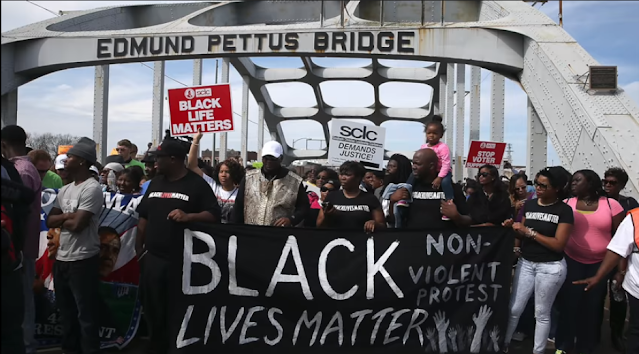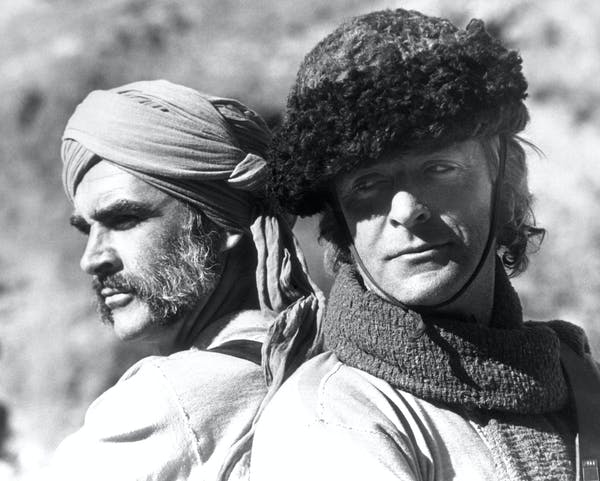![[Blog Tour] Guest Post by Anas Hamshari & Caroline Snodgress Authors of 'Anke: The Beginning' #HistoricalFiction](https://blogger.googleusercontent.com/img/b/R29vZ2xl/AVvXsEgS-WbjvMigLuMZuCqaU4LZU6PiR1B4bNIF_VzqOcoYonbHXd6IefQPeY45vbdZEaBW0C6Cy2PjrGIzutZgSC7orIhwAF35eVjUafCo7V_cMIoAyaMxzlmVkI37Sy-ToBN39zhvhRligbac/w640-h360/TOUR+BANNER+ANke+The+BEGINNING+copy.png) |
| [Blog Tour] 'Anke: The Beginning' by Anas Hamshari & Caroline Snodgress |
Guest Post
By Anas Hamshari and Caroline SnodgressThe seventeenth century was an interesting time for Northern and Western Europe. It is known to some historians as the “General Crisis”—a name that emphasizes the widespread turmoil, conflict, and instability of the period. Even if one considers this name to be an exaggeration, or perhaps an oversimplification, it is impossible to dispute the fact that the century was marked with violence, and contained events which would have a huge impact on the years to come.
Perhaps the most notable aspect of the century is that of its situation in a post-Reformation world. Before Luther’s Ninety-five Theses in 1517, there were no Protestant nations in Europe. In fact, there was essentially no Protestantism in existence for the people to follow. However, with Luther’s ideas of justification by faith alone, free will, and the condemnation of papal indulgences, the movement quickly began to spread. In 1525, the Duchy of Prussia was the first to formally adopt this Evangelical or Lutheran faith. Within a few decades, the Catholics were retaliating with the Counter-Reformation, and the religious conflicts of Central Europe were in full swing.
Almost exactly one hundred years after Luther supposedly nailed his Theses to the door of the Wittenberg Castle Church, the Bohemian Revolt broke out. Though religious conflict between Catholics and Protestants had technically been settled before the end of the sixteenth century, tensions were still high. Eventually, the Protestant Bohemian estates became dissatisfied with the rule of the Catholic Habsburgs, and in 1618 they revolted against Ferdinand II, offering the crown to the Calvinist Frederick of the Palatinate instead. Though Frederick’s rule would not last for very long, this revolt served as a spark for the Thirty Years’ War. And, perhaps equally important, it also got countries in Western Europe involved in the conflict, namely: the Dutch Republic, and Habsburg Spain.
The Dutch Republic had its roots in the Reformation and growing anti-Habsburg sentiment of the mid-sixteenth century as well. The Dutch Revolt, essentially the first part of the Eighty Years’ War or War for Dutch Independence, began when Philip II of Spain came to the throne. He was a much more strict ruler than his father had been, and, before long, some of the nobility began to oppose him. This rebellion, combined with the clashes between Dutch Calvinists and Habsburg Catholics, hunger, and economic troubles, soon led to a full-fledged revolt. The Seventeen Provinces began to fight for their independence from the Holy Roman Empire’s House of Habsburg.
Though the revolt began in 1566, it was not until the Union of Utrecht in 1579 that the northern provinces of the Netherlands were unified—essentially serving as the foundation for the seven United Provinces, or Dutch Republic, which would arise at the end of the century, and be formally recognized by Spain at the beginning of the next. At first, Antwerp, the largest city in the Low Countries, served as the provinces’ capital, but in 1585, it fell once more to the Spanish. The population plummeted—a result of violence, and of Protestants fleeing to the north. The Netherlands was split into the independent north and the Spanish south.
The feud between the Netherlands and Spain, between Protestants and Catholics, and between the people and their Habsburg rulers, however, was not concluded by the end of the sixteenth century. All of this tension erupted within the seventeenth. The Bohemian Revolt in the century’s early years gave way to the Thirty Years’ War, which also incorporated the Eighty Years’ War in the Netherlands, the ongoing Habsburg-Bourbon conflict, and a handful of other interconnected wars across Europe. The entire continent was engulfed in violence, and, at the war’s end in 1648, it was a markedly different land. Within the Habsburg Monarchy, Protestantism was mostly eradicated, but Habsburg power as a whole had declined. The religious wars in Europe had essentially come to an end. Meanwhile, Dutch independence, in the north at least, was officially recognized, and Spain ceded all control to the land.
Seven years after the end of the Thirty Years’ War, we find Anke living in Mechelin, a city just south of the once-powerful Antwerp, in the Spanish Netherlands. While Anke herself is fictional, the dynamics which shape her life are not. Like the real people of the Spanish Netherlands at this time, she lives in a land still ruled by the power of the Habsburgs—or, as they are more likely known to her, the House of Austria—and by the Catholic Church. She was born into the war, fifty-one years after the Fall of Antwerp, and has seen the provinces to the north gain independence while her own lands remain a part of the empire. With the river Scheldt closed to navigation by the Dutch in the north, the population of Antwerp decimated, and the prosperity of the Netherlands gone to Amsterdam, Anke lives a life of relative poverty, and without many possibilities.
However, she is not without hope.
While religious tension was growing in Central Europe, around the world the Age of Discovery was flourishing. From about the beginning of the fifteenth century, to Anke’s lifetime in the mid-seventeenth century, European nations such as Portugal began to venture out across the water and set foot in lands previously unknown to them. The conquest and colonization that followed brought great profit and great prestige to many European nations, while simultaneously bringing destruction to the indigenous populations of places such as the Americas, so-called Ceylon, and Siberia. Opinions on the legacy of colonization still vary to this day, but even disregarding the question of morality, one can see that this Age of Discovery was a period which, for better or worse, changed the world as we know it. Religious conflicts gave way to battles over territory, as colonies changed hands, and new cities sprung up in lands across the Atlantic. When Anke lands in New Amsterdam in the autumn of 1655, there is less than a decade left before it will be taken over by the British. Before long, America will begin thinking about a revolution of its own—perhaps taking some of its inspiration from the Netherlands.
The seventeenth century was, without a doubt, a turbulent and bloody time. But it was also a time of change, of people fighting for their beliefs and making a difference in the world around them. It was a time of exploration, of new nations, and, in Anke’s case, of new beginnings.
![[Blog Tour] Guest Post by Anas Hamshari & Caroline Snodgress Authors of 'Anke: The Beginning' #HistoricalFiction](https://blogger.googleusercontent.com/img/b/R29vZ2xl/AVvXsEhkqbWVNqss90I5_w_EIDNkuJdY4wziLJAa4uLebiTDiffTqCXq2-pGL8BV8kNgGfylmowwpj0ogD4oXwMBCk7J4Lv0CIqraeFqmRSx_H8h-9H1W8QmPwOYLpVFxnKVlUt88E10nLzMNCqX/w400-h640/Anke+%2528Amazon+eBook+cover%2529+copy.jpg) |
| 'Anke: The Beginning' - eBook front cover |
The Book:
- Publication Date: September 16th 2020
- Publisher: Exotic Reads
- Page Length: 111 eBook / 170 paperback
- Genre: Historical Fiction
The Blurb:
Living in the city of Mechelen, just south of once-prosperous Antwerp, in the aftermath of the Thirty Years’ War, Anke Verhaegen, an ambitious nineteen-year-old, is determined to make the most of her life.
When her brother Johan suggests crossing the Atlantic to New Netherland, Anke knows this is her destiny. Together, the two set about attempting to secure passage across the sea. Before long, their plans are in motion, and hopes are high. Yet, with vengeful enemies, secrecy, and danger on the high sea waiting to be faced, will Anke really be able to secure a better life for herself?
Buy Links:
Authors Bio:
![[Blog Tour] Guest Post by Anas Hamshari & Caroline Snodgress Authors of 'Anke: The Beginning' #HistoricalFiction](https://blogger.googleusercontent.com/img/b/R29vZ2xl/AVvXsEhzncGhyphenhyphenSaAeiDBnJbrtd1h09ZzMKHcAPIrQtyJbDslrU305-07uB_TKMZc_lr_Q4LgpfZ0npBsA1kzmXBjedy3wqRUgejSR-zT-qJCaZnSsEM0AYBJs0yb8stj0FVJuQQIi7W3Cc-uoxs0/w640-h442/AH+copy.jpg) |
| Anas Hamshari |
![[Blog Tour] Guest Post by Anas Hamshari & Caroline Snodgress Authors of 'Anke: The Beginning' #HistoricalFiction](https://blogger.googleusercontent.com/img/b/R29vZ2xl/AVvXsEj8Qw59O7rhCXxOB2gnhCMtMbn-AxIi_HR0BYyuv2Ce1iUVNd6WrTK0awA8L2WUEc2WQMcbHn22PxiXg_cLmyoOR0hUIvcqL1-W2CYKaZfq4ufjA7Lp0t9U0hTBzcBOAyFpaTBFDgr3bXNf/w551-h640/CS+copy.jpg) |
Caroline Snodgress |
Blog Tour Schedule:
![[Blog Tour] Guest Post by Anas Hamshari & Caroline Snodgress Authors of 'Anke: The Beginning' #HistoricalFiction](https://blogger.googleusercontent.com/img/b/R29vZ2xl/AVvXsEgmzodmMNQNSK2XOpZwLZ3B9pf9aek5SYvIMWXXF6BNYZ3H5xZoY7h9EKFnS1rFle_VX36ykAjms8as7hYCIDq_mF-mjY71nGPmbD7pyUqpaDq3n-sm71CHU3JX_sf2hod37nit0dn5Wawj/w640-h360/Tour+Schedule+ANke+The+BEGINNING+copy.png) |
| Blog Tour Schedule for Anke: The Beginning' |




































